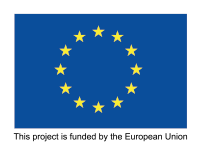
First of all, we would like to ask about the Izmir earthquake we experienced recently and the photographs of children shared with the earthquake agenda. After the Izmir earthquake, our eyes were focused on the good news coming from under the debris, we saw that the photos and videos of the children rescued from the wreckage were shared on social media and TV. However, you are saying that there is behavior that violates the rights of children. So why should we not share photos of children?
So I'm asking: Why should we share, why should we share it? I wish people (adults) to ask themselves this for a moment, I expect: "Now, why am I sharing exactly the picture of this child out of the wreckage? I saw that picture and why did I press it to share?" that's the real question. Most people got angry with me when I asked like this. "So what, we are full of hope, we are touched, we are happy, will we never share something nice, or never sympathize with them?" they said.
I am not questioning the moment when a person, a child survives a bad event, relaxes us. Of course, there can be no more humane feeling than wishing no harm done to anyone. But I ask why do we need that image of a child for that? Because if we watch and share those images to get more help, to cry and to feel emotional, to say fortunately it's not my child, or to feel grateful to the child, we will instrumentalize the child, without realizing their real need and taking action for it, we'll finish the day with the inner peace of sharing a photo.
Our perception of children often determines our communication about children. If we define them in terms of adults, we perceive them as "immature", "missing", "half", "not happened," we ignore that they are individual, that they have their views, beliefs, tastes, limits, and privacy. When we do this, we ignore and pass over the children. This perception is so culturally ingrained that we forget that the images of children belong to them, that we cannot share their images without their approval. Which of us would like to cameras, lights, shoutings, crowded heaps be at the head of us while we are pulling out of the wreckage we spent hours alone and in fear; which of us would like that our state to be seen everywhere, as we want to leave that moment behind? So why do we do this for children?
The Convention on the Rights of the Child also guarantees the "Right to Participation of the Child". Can we talk a little bit about that? What does the child's right to participate mean? Again, to link this question with the framework above, isn't it enough to get approval for the news/images from the caregiver?
It means taking their opinion on every subject that interests the child, listening seriously, accepting them with their differences, creating spaces and tools where he can express himself confidently. It is also the responsibility of adults to create these spaces and tools.
As beings in life, every subject concerns children. Whatever the age of children, how they have differences and diversity, they are affected by the agenda and conditions and develop a view within these conditions. Getting approval for news and images concerns children as much as caregivers. In other words, the same value should be obtained from the child and the caregiver at the same time.
Some institutions, including municipalities, public institutions, non-governmental organizations, sometimes get a signature from the parent to approve the footage when registering with that institution. But most of the time, both the child and the parent remain unaware of what this is. It is not adequately disclosed or presented as a "sine qua non" condition of the recording. However, although it is assumed that there is a document stating that the image can be used, employees in the institution or institution itself must ethically ask permission from that child and their caregiver in every new situation.
So with all that we've talked about, why and how should organizations working in different fields include the child perspective in their work, whether they work directly with children or not?
It is necessary to expand the understanding of working with children, not for children. This again starts with questioning our perception of children. Every organization working with the claim of providing benefits to children should ask itself to what extent and to what extent they include children in their studies, how they perceive children, and whether they fulfill the principles of children's rights.
When we plan our work based on children's rights, we observe the most inclusive working principles, including the most vulnerable groups.

